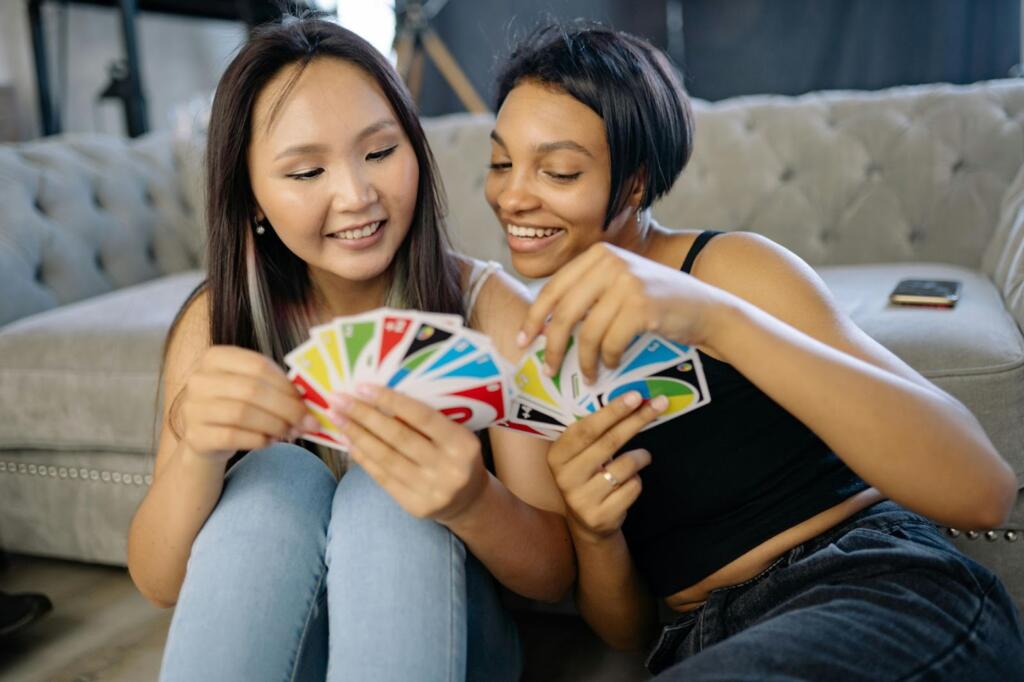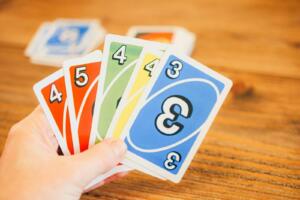Table of Contents
Card games have a way of making quiet moments more meaningful. With only two players, there’s no need for a complex setup or long wait times. Each turn matters. You’re not just playing cards — you’re paying attention, planning ahead, and trying to read your opponent. It’s a straightforward setup that allows for a mix of skill, luck, and a bit of friendly banter.
Introduction to two player games
A deck of cards can turn a spare half-hour into shared time. With just two players, the pace is brisk and the focus sharp. Rules need little setup, yet play offers depth. Two-player card games fit train rides, coffee breaks, or quiet evenings at home. They build tactics, patience, and light rivalry with minimal gear. With only one opponent, conversation flows and every choice counts, helping you learn card odds and timing.

Types of games
Card games for two fall into broad styles. Some games ask you to capture tricks, others combine cards with boards, and many use matching or shedding. Knowing the style you like helps you choose the right title.
Trick taking game
In a trick-taking game, each round (known as a trick) sees both players lay one card. The higher card in the led suit, or a trump card, wins the trick, and points follow the tricks you collect. Piquet is a classic. Each player holds twelve cards from a thirty-two-card deck, discards a few, then draws replacements before the trick phase. The game rewards memory and plan-ahead thinking.
Another choice is Two-Handed Spades. Standard Spades needs four players, but there is a variant that falls in the category of card games for two. Each bid promises a number of tricks; meeting or missing that promise changes your score. If you want a brisk option, try Schnapsen, the Austrian forebear of Gin Rummy. It needs only twenty cards and ends when one player reaches sixty-six points.
Board games
Some card games track scores or moves on a board. The board keeps count and adds a visual race. Cribbage tops this list as one of the best card games for two. Players build hands of sets and runs, then peg points along a wooden track. Because the board shows positions at a glance, tension builds as pegs close in on the finish line.
Another hybrid is Onitama. Players move tokens on a small grid using movement cards that swap between opponents. Though sold as a board game, its turn flow feels like a card duel where each choice shifts the next turn’s options.
Equipment needed for card games for two
Most two-player games ask for very little. A deck, a flat surface, and a way to note scores are enough. A pencil and paper work fine, yet a small cribbage board or phone app records totals with less fuss. Clear scores avoid disputes and speed the next hand.
Deck of cards
A standard fifty-two-card deck covers nearly every classic game. Many trick-taking titles use a cut-down deck—remove low ranks to make thirty-two cards for Piquet or twenty cards for Schnapsen. Keep cards clean and crisp so shuffling stays smooth. You don’t need to buy a specific set of cards when playing most card games for two, such as poker cards used for gaming. Any deck will do!
Card games for two game play
While rules vary, most games share a simple flow: deal, play, score, repeat. Clear turns and short hands keep both players involved.
Games play options
You can go head-to-head, cooperate against a shared deck, or switch styles mid-session. Competitive play pits you against your partner for points or position. Co-op modes—seen in some deck builders—ask you to beat a challenge deck together. You can set speed rounds with a timer to add energy, or use series play, where you string several quick games and sum scores.
Many classic titles now appear in mobile apps and online rooms, so you can test ideas before shuffling a real deck. Digital play also helps pairs who live apart keep their weekly match alive.
Traditional games
Classic two-player titles remain popular for good reason.
Gin Rummy
Each player draws and discards to build sets (same rank) or runs (same suit). When your hand forms enough melds with low deadwood, you knock to end the round. Fast hands teach you to read your opponent’s discards.
Cribbage
Deal six cards, discard two to the crib, then score twice—once during pegging, again in the show. The board race and back-and-forth pegging give it a pleasing arc.
War
Each player flips a card, and the higher rank takes both. While luck-heavy, this is one of the best card games for two to teach card rank order to new players.
Crazy Eights for Two
Play one card that matches suit or rank; eights are wild. The first to empty a hand wins. The game inspired UNO and works well with two players once you drop the draw-two chain rules.
Modern games
Designers keep reinventing card play.
UNO
Although best known for groups, UNO scales to two by removing two copies of each action card to balance draws. The familiar colour-and-number match, plus Skip and Reverse, stays intact, making it a family standby and a nod to our earlier article on virtual game nights.
Jaipur
A set-collecting duel about trading goods in an Indian market. Players swap cards from the central row and score sets with chips that drop in value, urging quick sales.
Lost Cities
You and your partner fund expeditions by laying cards in order. Each expedition starts at minus twenty points, so you weigh risk before you commit.
Exploding Kittens (Two-Player Variant)
Remove a few cards, then take turns drawing and playing to avoid the bomb. The push-your-luck tension works well with two.
FAQs
What are the best card games for two players at home?
Gin Rummy, Cribbage, and Jaipur rank high because they use small space, short rules, and rich tactics. UNO also shines when you want a light match with bold colours.
Are there any quick and easy card games for two players?
Crazy Eights and War need little teaching and finish in minutes. If you like a modern twist, UNO’s two-player tweak or Exploding Kittens offer a fast laugh.
Can traditional card games be adapted for two players?
Yes. Variants like Two-Handed Spades or Cutthroat Bridge drop partners but keep core rules. Even games that need four hands often have published two-player versions that adjust the deal or scoring.



